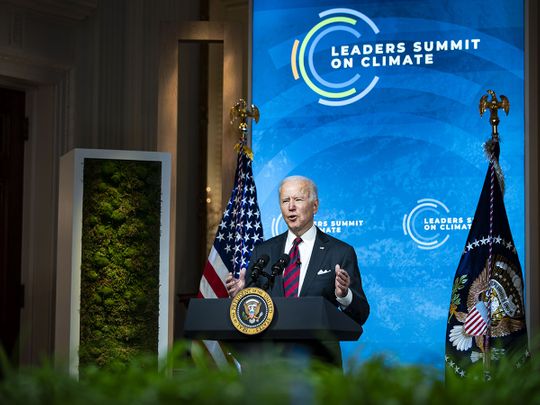
My crystal ball is a bit hazy this year but relying on my limited knowledge, I shall, nevertheless, hazard a guess as to what to expect in 2022. With this disclaimer, let us begin by pointing out that the just-ended 2021 stood under a black Covid-19 cloud with the virus mutating in new variants which will very likely continue in 2022. Wearing masks and keeping safe distance from each other have become our bane and the new normal.
The pandemic is here to stay for some time. That’s what all the professionals and experts have been predicting.
But there are also other crises that could erupt in all ferocity. There is the Ukraine crisis. US President Joe Biden held a “frank and open” telephone conversation about the consequences of a Russian intervention in Ukraine. Vladimir Putin, the Russian President, at the other end, was listening to President Biden’s “unvarnished” words.
Putin wants to prevent Ukraine from joining the Nato alliance. Another conversation between Russian and US officials on Jan. 10 in Geneva, as a follow-up to the Biden-Putin talk, failed to move Russia to pull back troops amassed at its borders with Ukraine. The Ukraine crisis will hang like the proverbial Damocles’ sword in 2022.
The India-China border skirmishes at the Ladakh border have also not been resolved; indeed, on the eve of the Jan. 12 meeting between the two sides to resolve the border dispute, the Biden administration’s spokesperson Jens Psaki told journalists in Washington that “we are closely monitoring the (India-China) situation. We continue to support a negotiated and peaceful settlement of these border disputes”.
Another major issue of global concern is Iran’s nuclear programme that has angered the West, notably the US. Negotiations with Iran had failed to produce a breakthrough and as 2021 ended, Iran had not shown any inclination to return to compliance with the 2015 nuclear deal.
Western intelligence sources maintain that by end of 2021, Iran appeared capable of producing enough weapons-grade uranium for nuclear weapons within a month of deciding to do so. Some experts argue that Iran will settle for being a threshold nuclear state with the potential to “go nuclear” at short notice.
World leaders, shaken by the Covid-19 disruptions, will give top priority to their economies. The US economy made a recovery last year, stimulated largely by massive infrastructure development funding and an oversupply of money which generated higher consumer demand but also unleashed inflationary trends. China, the world’s second largest economy, faced an economic slowdown which was inevitable after 30 years of high growth and rapid development.
The developed countries, thanks to advanced technology, would see new, innovative products, services and novel ways of doing daily business in the future; more and more countries in the West will consider introducing cash-free dealings.
World economic growth for 2022 is forecast to grow at 3.9%, with the US and China expected to grow at 3.8% and 5.5% respectively. The Conference Board, a research group based in New York, says that India’s growth rate could touch 8.5%, an impressive rate amid the ravaging Covid-19.
The World Bank data, on the other hand, suggests that India’s economy will grow by 8.3 per cent in the fiscal year ending March 2022, unchanged from the June 2021 outlook. The forecast for FY2022/23 and FY2023/24 for India has been upgraded to 8.7 per cent and 6.8 per cent, respectively, reflecting higher investment from the private sector and in infrastructure, and dividends from ongoing reforms, according to its latest Global Economic Prospects report.
There are also indications that the Biden administration wants to establish a strong presence in the Indo-Pacific region. Washington, criticised by allies and friends for its disastrous exit from Afghanistan, is keen to demonstrate to friends and foes that it has not given up its leadership responsibilities — be it in Europe or the Indo-Pacific.
White House Indo-Pacific coordinator Kurt Campbell, at a recent Carnegie Endowment for International Peace webinar, said President Joe Biden had made it clear the United States needs to be instrumental in the framing of economic and commercial engagement and trade practices in the Indo-Pacific as China’s influence grows.
“We’ve got to make clear that not only are we deeply engaged diplomatically, militarily, comprehensively, strategically — that we have an open, engaged, optimistic approach to commercial interactions, investment in the Indo Pacific,” Campbell said.
President Biden will continue to build strong ties with allies and partners to counter what Washington sees as increasing economic and military coercion by Beijing.
His administration has touted its so-called AUKUS pact, under which the United States and Britain have agreed to help Australia acquire nuclear submarines — as well as leader-level summits between the United States, Australia, India and Japan.
Some Indo-Pacific countries, heavily dependent on trade with China, have lamented the lack of US economic engagement in the region, especially after former President Donald Trump backed away from the Comprehensive and Progressive Agreement for Trans-Pacific Partnership (CPTPP) trade deal. China, which wants to join the CPTPP, spearheads a separate 15 nation regional trade pact called the Regional Comprehensive Economic Partnership (RCEP).
Is the crystal ball clear about the directions in which the world will be pulled in 2022? Not really, but the factors elucidated above should play a crucial role in world affairs.
Manik Mehta is a New York-based journalist who writes extensively on foreign affairs, diplomacy, United Nations, global trade and economics.









